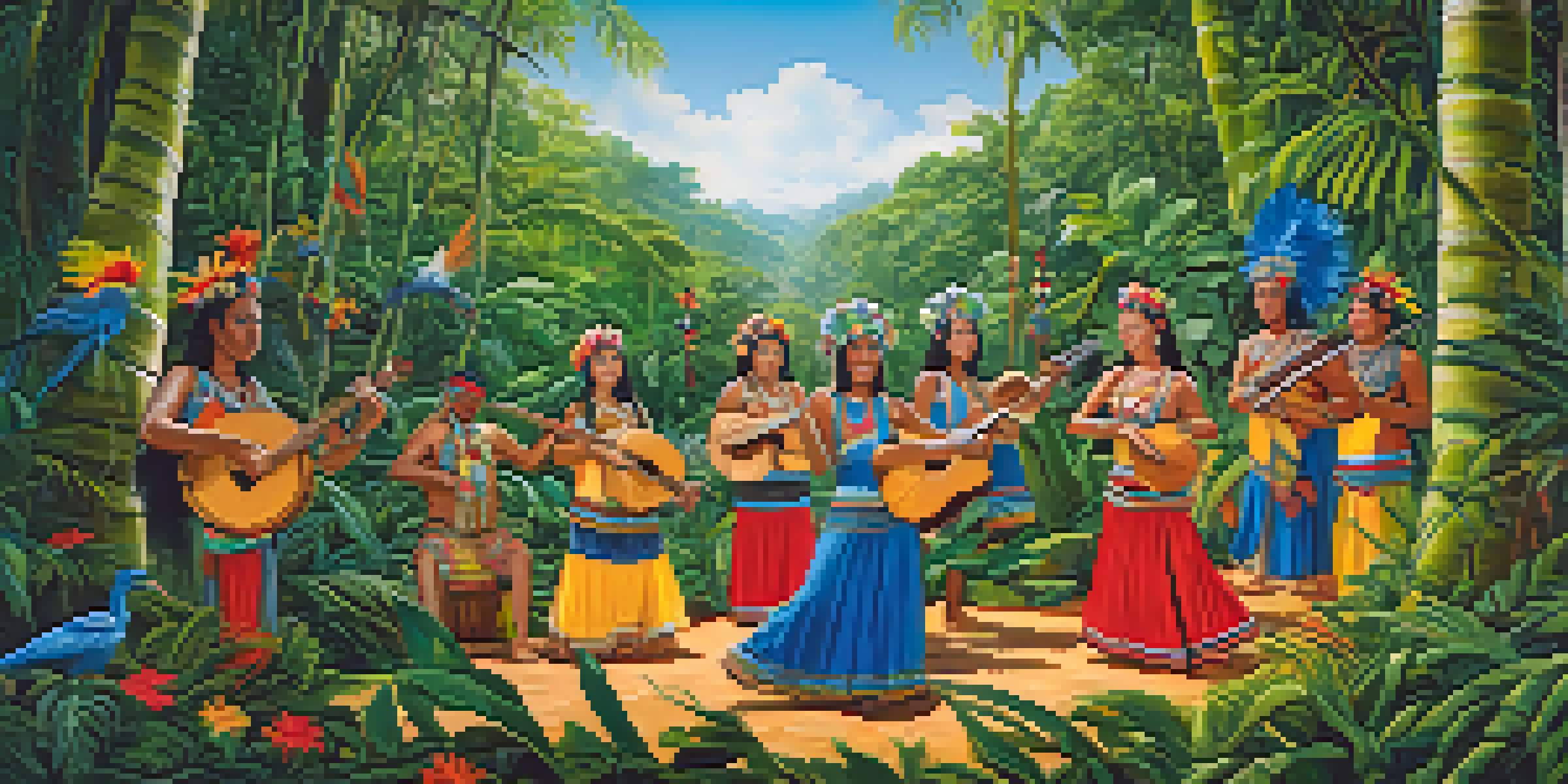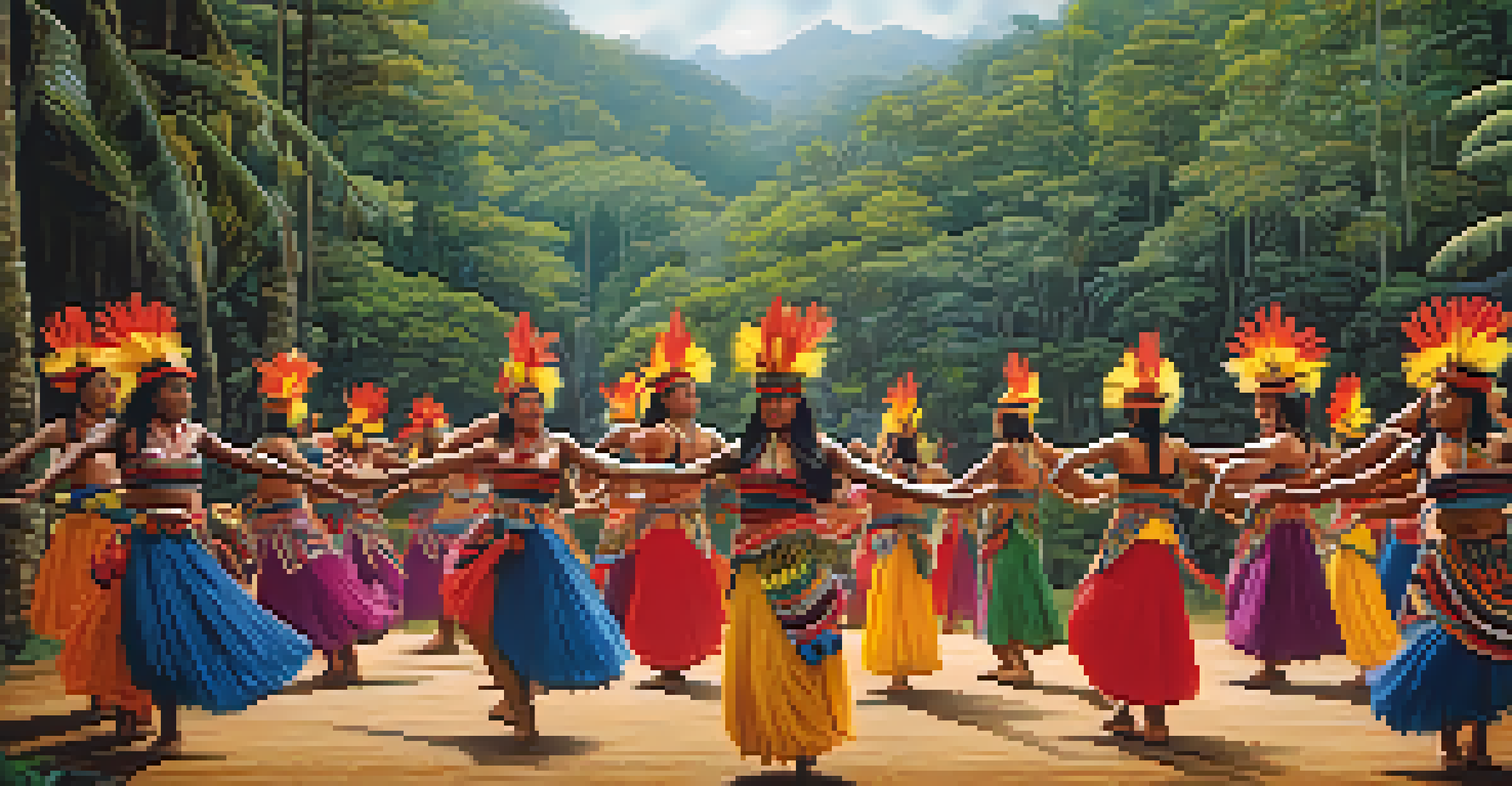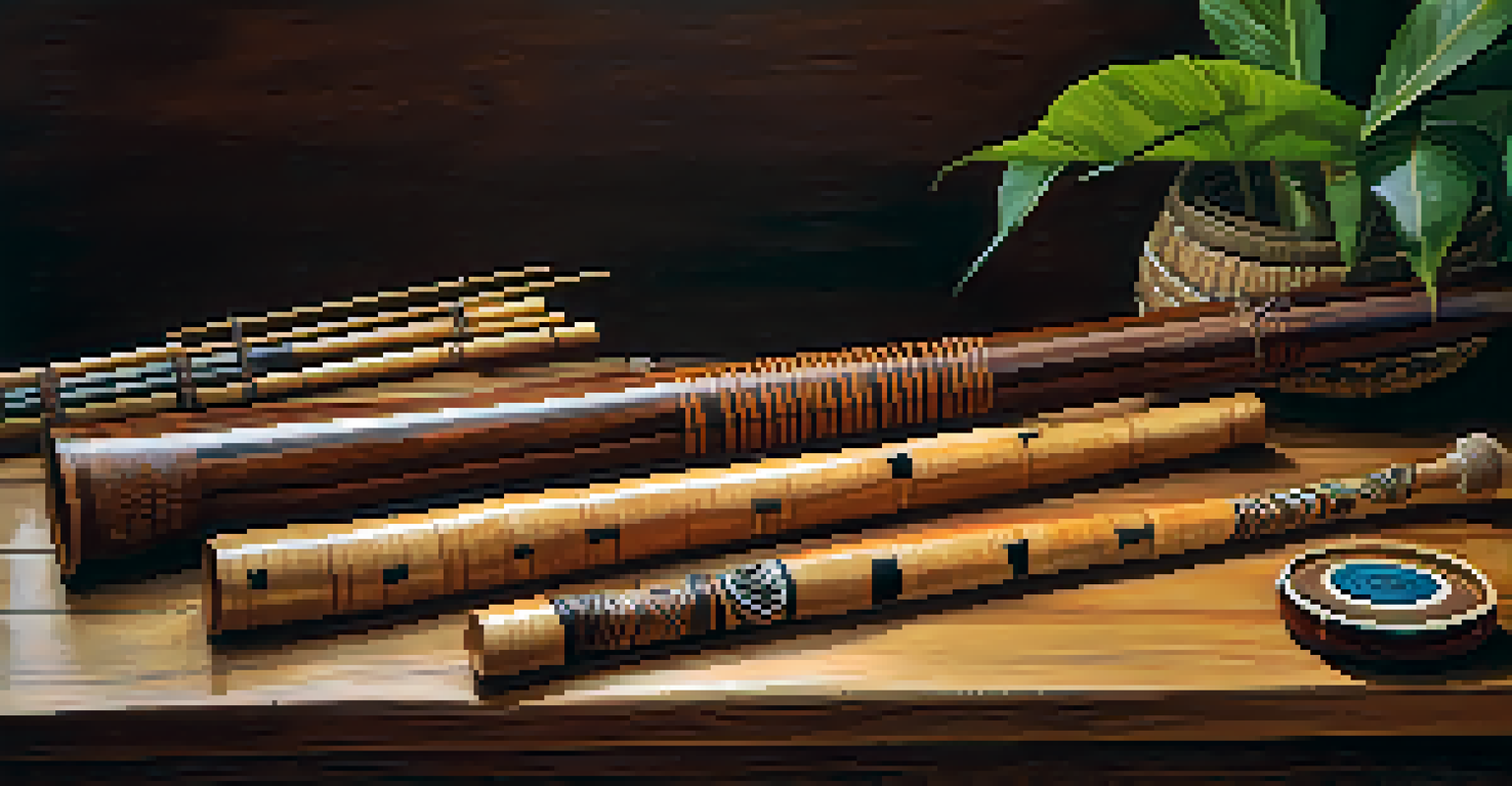Exploring the Amazon: Music and Culture in the Rainforest

The Amazon: A Melting Pot of Cultures and Sounds
The Amazon rainforest is not just a natural wonder; it's a cultural tapestry woven from the threads of various indigenous groups. Each community brings its unique traditions, languages, and, most importantly, music. This rich blend results in a vibrant soundscape that reflects the diverse lifestyles and beliefs of the people who call the Amazon home.
Music is the shorthand of emotion.
In the heart of the Amazon, music serves as a vital form of expression, bringing communities together and preserving their history. Traditional instruments like the maraca and flutes made from local materials offer distinct sounds that resonate with the rhythms of daily life. Whether during festivals, rituals, or casual gatherings, music is an integral part of social interaction.
Moreover, the Amazonian music scene is evolving as modern influences blend with traditional sounds. Artists are experimenting with different genres, creating fusions that appeal to younger generations while keeping their cultural roots intact. This intermingling of styles not only enriches the music but also fosters a deeper appreciation for the Amazon's cultural heritage.
Traditional Instruments: The Heartbeat of Amazonian Music
In the Amazon, traditional instruments play a crucial role in expressing the cultural identity of various tribes. Instruments such as the berimbau, a single-string percussion instrument, and the flute made from bamboo are often used in ceremonies and celebrations. Each instrument carries with it a story, a connection to the land, and the ancestors who came before.

Crafting these instruments is an art form in itself, often passed down through generations. Artisans use locally sourced materials, blending creativity and functionality to create unique sound-makers. The process of creating music becomes a communal activity, where knowledge and skills are shared, reinforcing bonds among community members.
Music as Cultural Identity
In the Amazon, music embodies the diverse traditions and identities of indigenous communities, serving as a vital form of expression and social bonding.
As globalization impacts the Amazon, traditional instruments are beginning to find their way into popular music genres. Young musicians are embracing these instruments, infusing contemporary styles with ancient sounds, thereby ensuring that the music of the rainforest continues to evolve while honoring its roots.
Ceremonial Music: A Spiritual Connection to Nature
Ceremonial music holds a special place in Amazonian culture, often tied to spiritual beliefs and rituals. Many tribes use music to connect with nature, invoking spirits and paying homage to the earth. This spiritual aspect of music creates a profound bond between the people and their environment, underscoring the importance of harmony in their way of life.
The power of music is such that it can take you back in time and bring forth memories long forgotten.
During rituals, songs are performed to mark significant life events, such as births, marriages, and funerals. These songs serve as a means of storytelling, passing down wisdom and cultural values to younger generations. The lyrics often reflect the community's relationship with the rainforest, emphasizing respect and gratitude for the gifts of nature.
Moreover, the rhythms and melodies used in ceremonial music are believed to have healing properties. Shamanic practices often incorporate music to facilitate communication with the spiritual world, using sound as a tool for healing and guidance. This deep-rooted connection between music and spirituality illustrates the profound respect Amazonian cultures have for their natural surroundings.
Dances of the Amazon: Telling Stories Through Movement
Dance is another expressive form that complements the music of the Amazon. Each dance tells a story, often depicting historical events, legends, or the daily lives of the people. Movements are not just for entertainment; they embody cultural narratives, showcasing the values and lessons of the community.
Traditional dances are typically performed during festivals and communal gatherings, bringing people together in celebration. Dancers often wear vibrant costumes adorned with feathers, beads, and other natural materials, visually representing the richness of their culture. The pulsating rhythms of the accompanying music drive the energy of the dance, creating an immersive experience.
Globalization's Double-Edged Sword
While globalization poses risks to traditional Amazonian music, it also provides opportunities for artists to reach wider audiences and innovate their cultural expressions.
As with music, contemporary influences are making their way into Amazonian dance. While preserving traditional styles, younger generations are incorporating modern dance elements, creating a dynamic fusion that resonates with today's audiences. This evolution reflects the adaptability of Amazonian culture, ensuring it remains relevant and vibrant.
The Influence of Globalization on Amazonian Music
Globalization has brought both challenges and opportunities for the music and culture of the Amazon. While it poses risks to traditional practices, it also opens doors for indigenous artists to share their music with a broader audience. This exposure can lead to greater appreciation and respect for Amazonian cultures worldwide.
Many Amazonian musicians are now collaborating with artists from different genres, creating innovative blends of traditional and contemporary music. This fusion not only attracts younger audiences but also enriches the overall music scene. By embracing new influences, these artists are helping to keep their cultural heritage alive and relevant.
However, it is essential to navigate this globalization carefully to ensure that the core values and traditions are preserved. Community members are increasingly aware of the importance of maintaining their cultural identity while adapting to the changing landscape. This balancing act is crucial for the sustainability of Amazonian culture in the face of modern pressures.
Preservation Efforts: Protecting Amazonian Culture and Music
As globalization and environmental changes threaten the Amazon, efforts are underway to preserve its rich cultural heritage. Organizations and local communities are working together to document traditional music and practices, ensuring they are not lost to time. These initiatives often involve recording songs, teaching traditional instruments, and hosting cultural festivals.
Educational programs aimed at younger generations are also essential in these preservation efforts. By instilling a sense of pride and understanding of their cultural roots, communities can foster a new generation of musicians and storytellers. This continuity is vital for maintaining the unique identity of Amazonian culture.
Preservation of Heritage
Efforts to document and teach traditional music are crucial for passing down cultural knowledge and ensuring the survival of Amazonian heritage amid modern pressures.
Furthermore, raising awareness about the importance of the Amazon rainforest itself plays a crucial role in these efforts. As people connect with the music and culture of the region, they may feel inspired to advocate for its protection. This synergy between culture and environmental activism can help ensure a sustainable future for both the rainforest and its inhabitants.
The Future of Amazonian Music and Culture
Looking ahead, the future of Amazonian music and culture appears to be a blend of tradition and innovation. As younger generations continue to explore their identity, they are likely to experiment with new sounds while holding onto their cultural roots. This fusion will not only keep the music alive but also make it accessible to a global audience.
Digital platforms have made it easier than ever for Amazonian musicians to share their work beyond their local communities. This exposure can lead to collaborations and opportunities that help elevate Amazonian voices in the global music scene. With the right support, these artists can gain recognition while promoting their cultural heritage.

Ultimately, the resilience of Amazonian culture will depend on the ongoing commitment of its people to celebrate and preserve their traditions. By embracing change while honoring their past, the communities of the Amazon can ensure their music and culture thrive for generations to come.